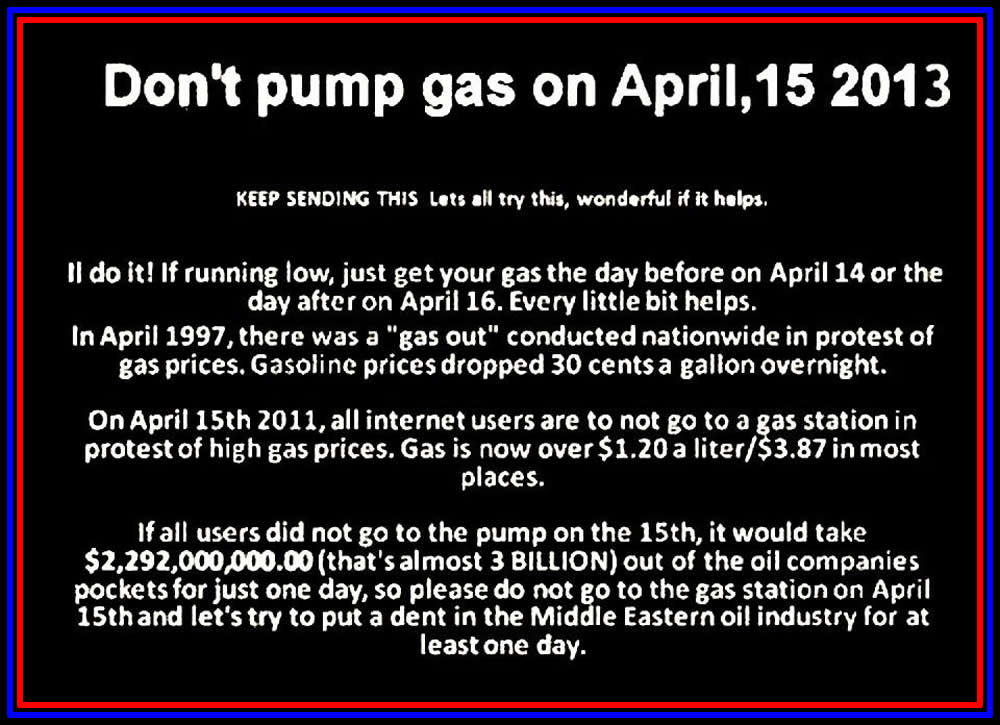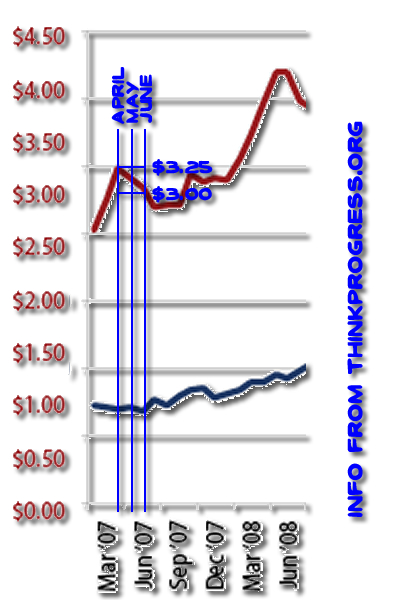Here’s why this is destined to fail:
It assumes that this one day’s of oil will immediately back up all the way to the oil producing countries, causing them to panic and cut prices.
Consider this:
- The Chevron station I worked at, one of the busiest in Utah, had gas delivered only 2 or 3 times a week.
- They get their gas from a distributor that probably stores hundreds of thousands of gallons of gas right here in Utah.
- Those distributors get their oil from a system that has millions, if not billions, or gallons of oil in transit at any given time.
- The whole system is designed to absorb huge fluctuations in demand with relative ease.
Furthermore:
- From a psychological standpoint, I can guess that at least half those participating will fill up their cars the day before, rather than risking running out of gas, putting all that extra money into the system a day early.
- Those that fill up their vehicle the day after will only be depriving their local gas station the money for one day. Any damage that would have done will probably be cancelled out by the huge increase they had in sales two days before.
And finally, after some research on the internet, I cropped this chart out of an article about crude oil prices in the 90’s, one that had nothing to do with this boycott.
It shows that gasoline prices did drop 30¢ a gallon right after April ‘97, but it took 2 months to do it and they rebounded to the pre-April price by December of that year.




No comments:
Post a Comment